
The Delta was a 12-cylinder inverted-V aircraft engine built by Isotta Fraschini prior to and during World War II.
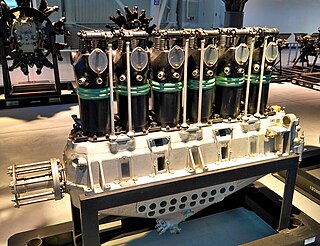
The Benz Bz.IV was a German six-cylinder, water-cooled, inline engine developed for aircraft use. Deliveries began in 1916 and some 6,400 were produced.

The Mercedes D.IVa was a German six-cylinder, water-cooled, inline engine developed in 1917 for use in aircraft and built by Daimler Motoren Gesellschaft (DMG).

The Ranger V-770 was an American air-cooled inverted V-12 aero-engine developed by the Ranger Aircraft Engine Division of the Fairchild Engine & Aircraft Corporation in the early 1930s.

The Rolls-Royce Exe, or Boreas, was a 24-cylinder air-cooled X block sleeve valve aircraft engine intended primarily for the new Fairey Fleet Air Arm aircraft, particularly the Fairey Barracuda. The Exe was relatively powerful for its era, producing about 1,100 hp. This is notable given the relatively small 22 litres displacement, the Merlin requiring 27 litres for approximately the same power level. The X-24 layout made this quite a compact engine.

The Argus As 410 was a German air-cooled inverted V-12 light aircraft engine that was first produced by Argus Motoren in 1938.
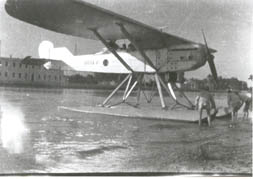
The Breda A.7 was a reconnaissance aircraft developed in Italy for use by the Regia Aeronautica in 1929. It was a braced parasol monoplane of conventional configuration with tailskid undercarriage. The pilot and observer sat in tandem, open cockpits. A single prototype of a long-range example, originally designated A.7 Raid and later A.16 was also constructed, but the air force showed no interest in it.

The Sunbeam Matabele was a British 12-cylinder aero engine that was first flown in 1918. The Matabele was the last iteration of one of Sunbeam's most successful aero engines, the Cossack.
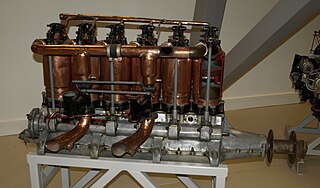
The Beardmore 160 hp is a British six-cylinder, water-cooled aero engine that first ran in 1916, it was built by Arrol-Johnston and Crossley Motors for William Beardmore and Company as a development of the Beardmore 120 hp, itself a licensed-built version of the Austro-Daimler 6.
The SIAI S.22 was an Italian racing flying boat, built by SIAI for the 1921 Schneider Trophy race.
The Sunbeam Cossack was a British 12-cylinder aero engine that was first run in 1916. The Cossack spawned a family of engines from Sunbeam.

The Asso XI was a family of water-cooled, supercharged V12 piston aeroengines produced in the 1930s by Italian manufacturer Isotta Fraschini, and fitted on a number of aircraft types built by CANT, Caproni and others.
The Sunbeam Afridi was an aero-engine produced by Sunbeam during the First World War.

The Isotta Fraschini V.6 was an Italian six-cylinder, water-cooled, in-line piston aero engine of the late World War I period, the "V" denoted "Volo" or "flight". Its construction was fairly typical of contemporary aircraft engines, using six cast-iron cylinders mounted in pairs with common heads.

The Walter Sagitta was a Czechoslovakian, air-cooled, inverted V-12 engine that first ran in 1937. With a displacement of 18.4 litres, it produced up to 373 kW at 2,500 rpm.
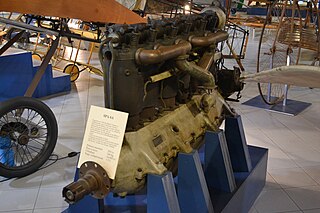
The S.P.A. 6A was an Italian aero engine of the World War I era. It was a water-cooled inline six-cylinder engine that produced 220 horsepower (164 kW).
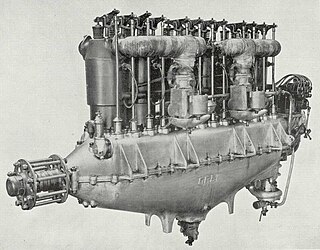
The Argus As III was a six-cylinder, in-line, water-cooled, aircraft engine produced in Germany by Argus Motoren during World War I. The As III produced 190 hp (140 kW).

The Isotta Fraschini Gamma was an air cooled aircraft engine developed by the Italian engineering company Isotta Fraschini in the 1930s.
The Isotta Fraschini Beta was an air cooled aircraft engine produced by the Italian engineering company Isotta Fraschini in the 1940s.




















